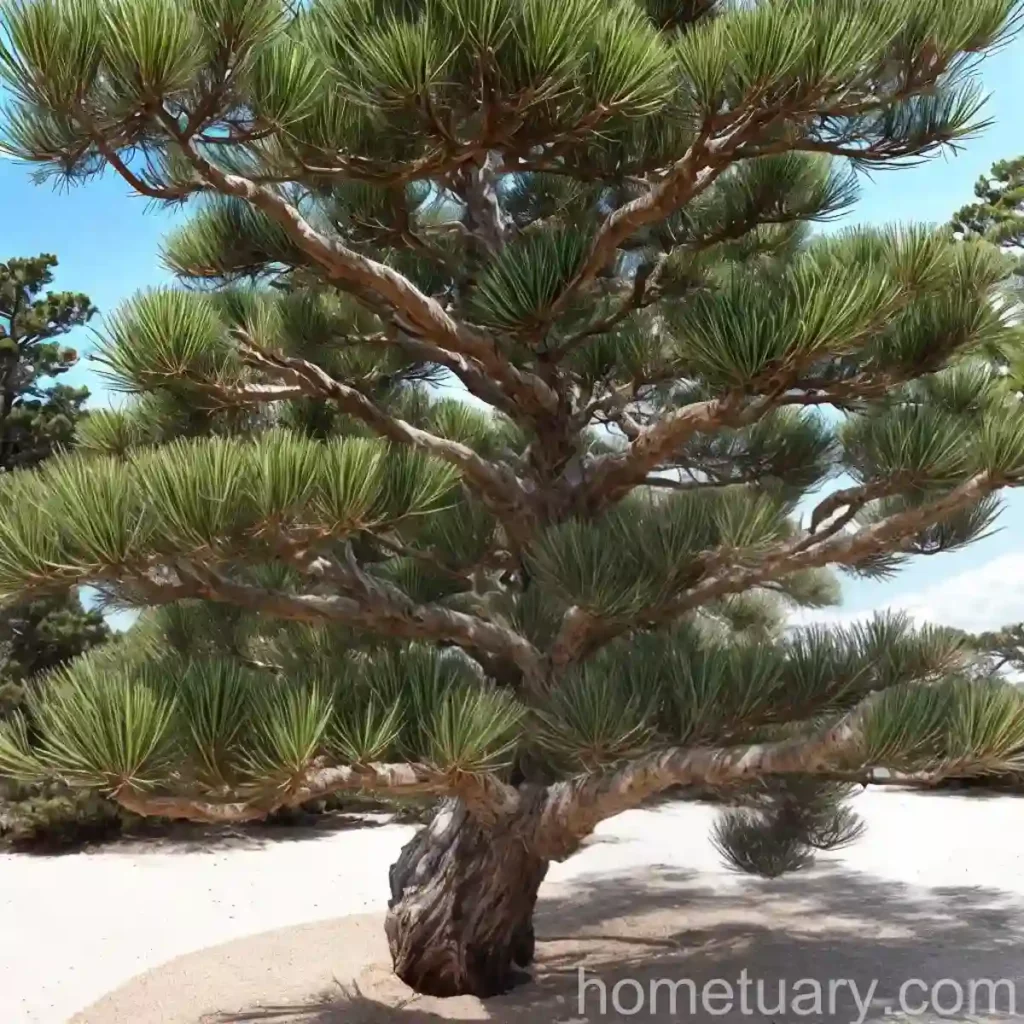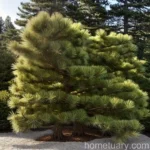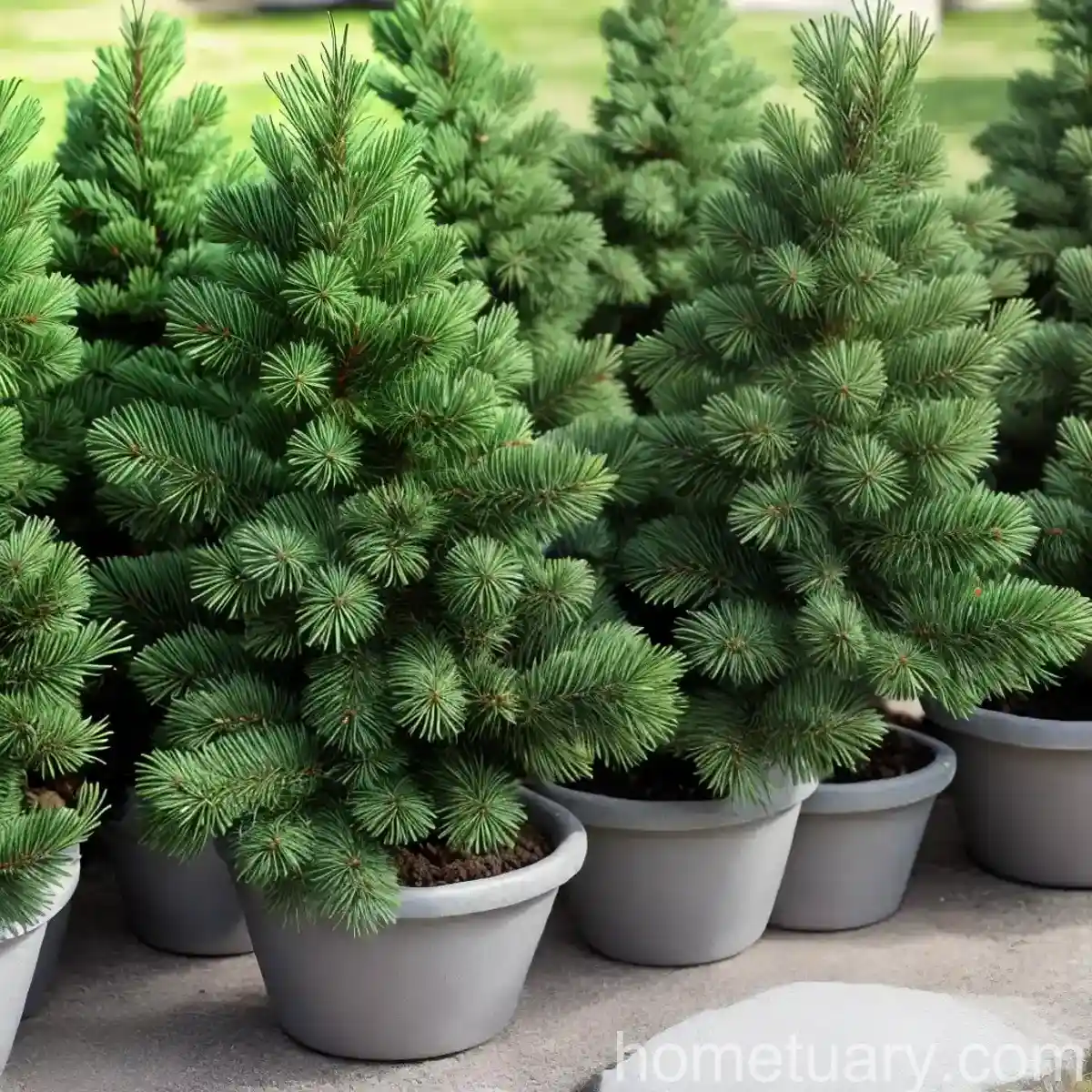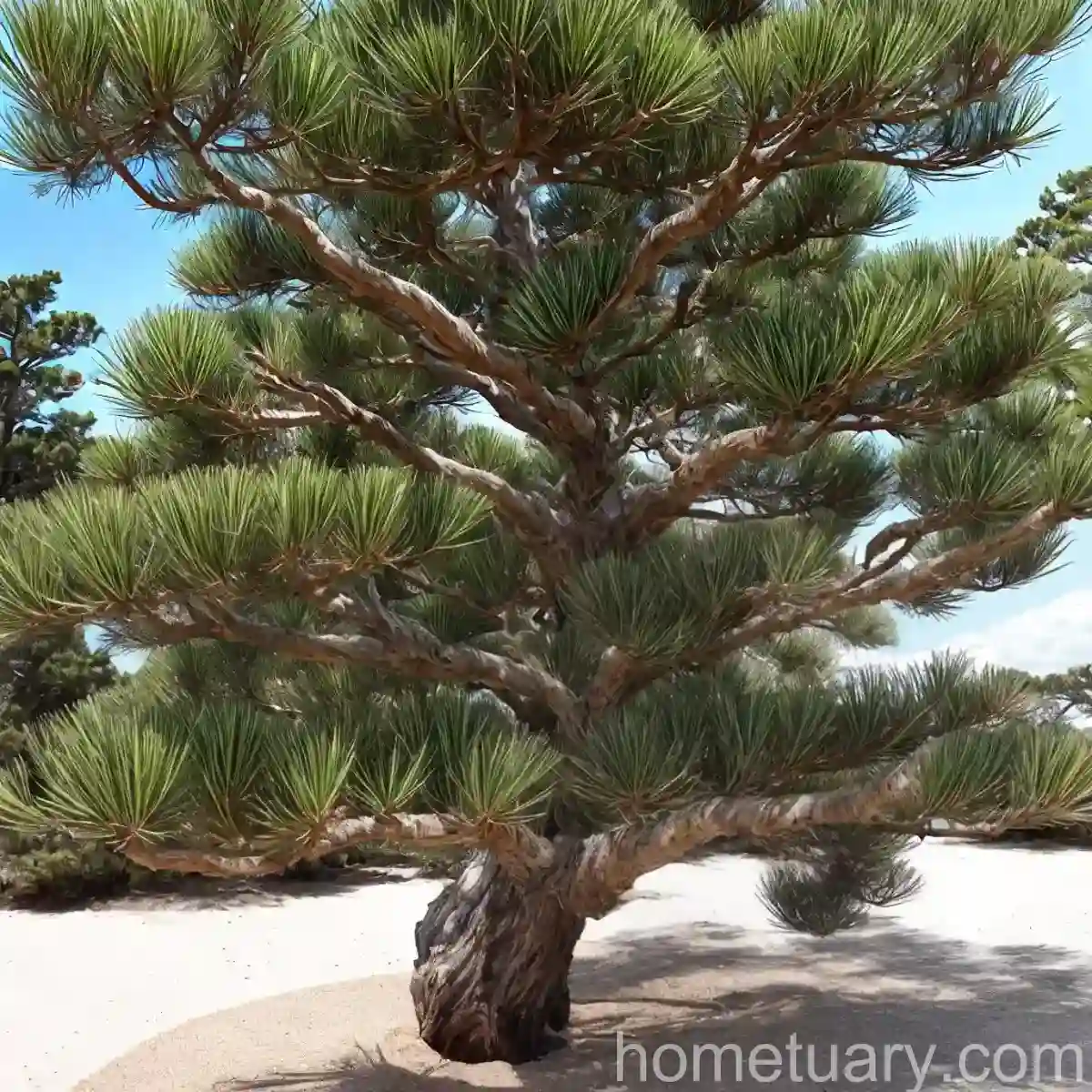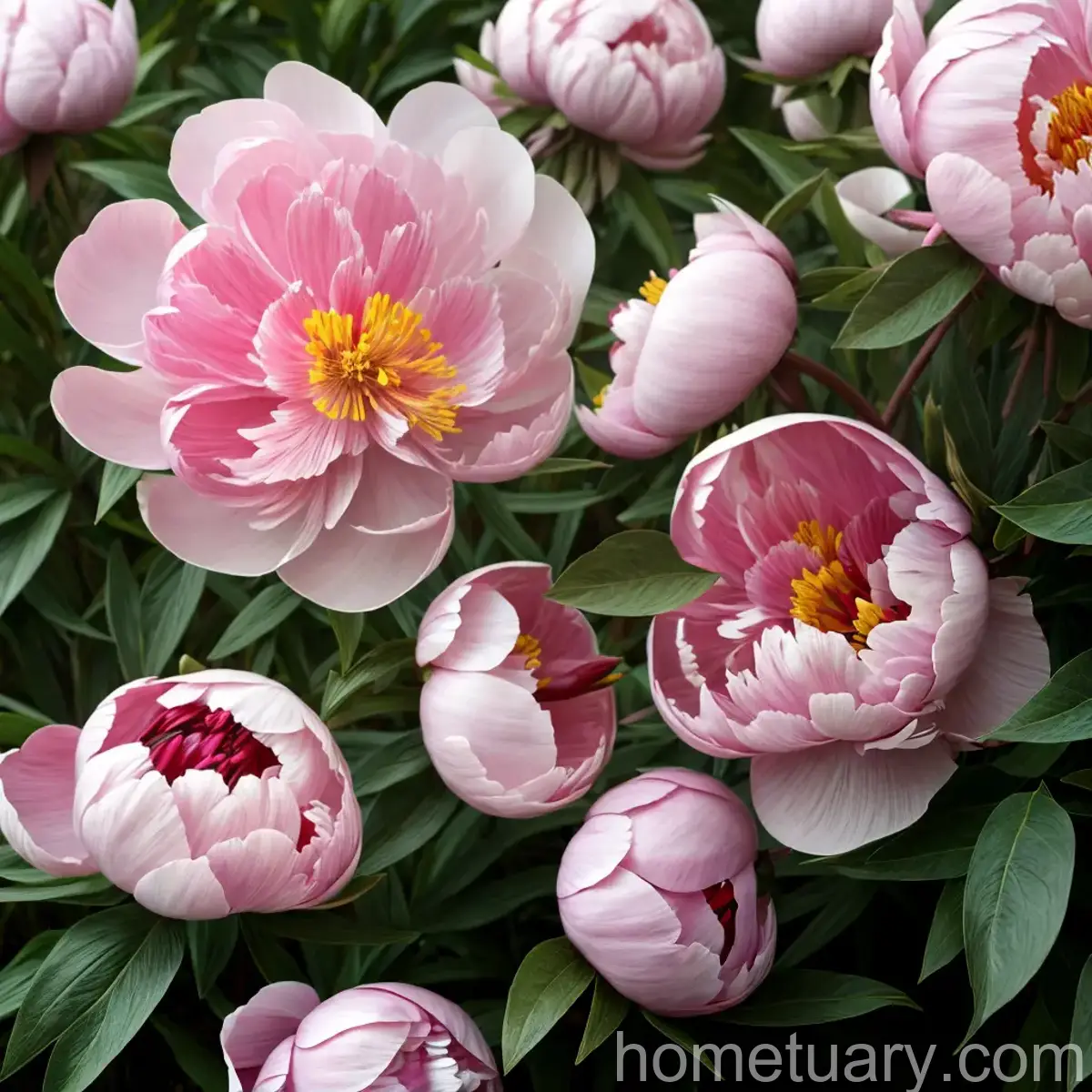Beach Pine (Pinus contorta var. latifolia ‘Chief Joseph’)
Introduction
Beach pine, scientifically known as Pinus contorta var. latifolia ‘Chief Joseph’, is a captivating evergreen conifer that belongs to the Pinaceae family. This variety is renowned for its striking golden-yellow foliage, which makes it a standout addition to gardens and landscapes. In this detailed guide, we will explore the various facets of beach pine, from its cultural requirements to its maintenance, and overall landscape uses.
Key Takeaways
Let’s begin by summarizing the key takeaways of beach pine (Pinus contorta var. latifolia ‘Chief Joseph’):
1. Chief Joseph beach pine – This is the variety of beach pine that boasts golden-yellow foliage, adding an element of visual interest to the landscape.
2. Beach pine species – Pinus contorta var. latifolia is a type of evergreen conifer that is known for its adaptability and distinct aesthetic appeal.
3. Beach pine characteristics – The Chief Joseph variety exhibits yellow-colored needles, particularly vibrant in the spring and fall seasons, and its hardiness in various environments.
4. Beach pine care tips – Proper water, sunlight, and soil conditions are crucial for the successful cultivation of Pinus contorta var. latifolia ‘Chief Joseph’.
5. Chief Joseph beach pine planting – Selecting an appropriate location and understanding the planting requirements can greatly impact the growth and development of beach pine.
6. Beach pine landscape uses – This unique variety offers versatile landscaping options, ranging from focal points in gardens to coastal gardening.
7. Beach pine pests and control – Like any plant, beach pine is susceptible to certain pests, and understanding control measures is essential for maintaining its health and vitality.
Now, let’s delve deeper into the various aspects of beach pine, from its cultural requirements to its potential uses and maintenance practices.
Culture
Understanding the cultural requirements of beach pine is fundamental to successfully growing and maintaining this captivating evergreen conifer. Here, we will explore the essential elements of culture, including water, sunlight, fertilizer, soil, and pruning.
Water
Watering Needs: Beach pine, particularly the Chief Joseph variety, exhibits moderate water needs. It is essential to establish a proper watering routine, especially during the initial establishment phase. Adequate moisture is crucial, but it’s equally important to avoid waterlogged conditions, as this can compromise the health of the plant.
Watering Frequency: During the growing season, beach pine should be watered regularly, ensuring that the soil is consistently moist but not waterlogged. In hotter climates or periods of drought, additional watering may be necessary to maintain optimal moisture levels.
Watering Tips:
– Utilize mulch around the base of the plant to help retain soil moisture and prevent rapid evaporation.
– Regularly monitor soil moisture levels and adjust the watering frequency based on environmental conditions.
Sunlight
Sunlight Preferences: Beach pine, including the Chief Joseph variety, thrives in full sun to partial shade. When selecting a planting location, it’s crucial to ensure that the site receives an adequate amount of sunlight, promoting healthy growth and vibrant foliage coloration.
Sunlight Considerations:
– Full Sun: A location that receives at least 6-8 hours of direct sunlight is ideal for beach pine, encouraging robust growth and vibrant foliage coloration.
– Partial Shade: In hotter climates or during the peak of summer, providing some relief from intense midday sun can be beneficial for the plant’s overall health.
Fertilizer
Fertilization Requirements: Beach pine, particularly the Chief Joseph variety, benefits from regular fertilization to support its growth and overall health. Utilizing a balanced, slow-release fertilizer formulated for evergreen trees and shrubs can provide the necessary nutrients for optimal development.
Fertilization Schedule:
– Spring: Apply a slow-release granular fertilizer early in the spring, just before the start of new growth.
– Fall: A secondary application of fertilizer in the fall can help support the plant during the dormant season and prepare it for the following spring.
Fertilizer Tips:
– Avoid over-fertilization, as this can lead to excessive foliage growth at the expense of overall plant health.
– Consider conducting a soil test to identify any specific nutrient deficiencies and tailor the fertilizer application accordingly.
Soil
Soil Requirements: Beach pine, including the Chief Joseph variety, thrives in well-draining, slightly acidic soils. Prior to planting, it’s essential to assess the soil composition and make any necessary amendments to ensure optimal growing conditions.
Ideal Soil Characteristics:
– Well-Draining: Proper soil drainage is crucial for preventing waterlogged conditions, which can be detrimental to beach pine.
– Slightly Acidic pH: Beach pine prefers a soil pH ranging from 5.5 to 6.5, creating an environment conducive to healthy root development and nutrient uptake.
Soil Amendments:
– Organic Matter: Incorporating organic amendments such as compost or well-rotted manure can improve soil structure and fertility.
– Mulching: Utilizing organic mulch, such as pine bark or wood chips, can help maintain soil moisture levels and regulate soil temperature.
Pruning
Pruning Techniques: Beach pine, including the Chief Joseph variety, generally requires minimal pruning. However, occasional pruning may be necessary to maintain its desired shape and size, as well as to remove any dead or damaged branches.
Pruning Guidelines:
– Timing: Optimal times for pruning beach pine are typically in late winter or early spring before the start of new growth.
– Sanitization: Use clean, sharp pruning tools to prevent the spread of diseases and ensure precise cuts.
– Branch Removal: Trim back any dead, diseased, or crossing branches to promote air circulation and overall plant health.
Uses
Beach pine (Pinus contorta var. latifolia ‘Chief Joseph’) offers a range of uses, from its ornamental value to its potential contribution to landscape arrangements and coastal gardening. Here, we will explore its diverse applications and the benefits it brings to various settings.
Landscape Ornamental Value
The Chief Joseph variety of beach pine is highly prized for its ornamental value, particularly due to its vivid golden-yellow foliage. Whether planted as a focal point in a garden or incorporated into mixed-border plantings, beach pine adds a distinct visual element to the landscape, especially during the spring and fall seasons when the foliage coloration is most vibrant.
Coastal Gardening
Beach pine, including the Chief Joseph variety, exhibits excellent tolerance to coastal conditions, making it an ideal choice for gardens and landscapes in coastal regions. Its ability to withstand salt spray and thrive in sandy soils contributes to its popularity for coastal gardening, where other plants may struggle to thrive.
Privacy Screen and Windbreak
Due to its dense foliage and upright growth habit, beach pine serves as an effective privacy screen and windbreak. Whether utilized as a standalone barrier or planted in clusters, it provides both visual and functional benefits in residential and commercial landscapes.
Focal Point in Gardens
The striking foliage coloration of the Chief Joseph variety makes it an excellent choice as a focal point in gardens. Its vibrant golden-yellow needles create a captivating visual display, particularly when paired with contrasting foliage or flowering plants.
Container Gardening
While beach pine is commonly planted directly in the ground, it can also thrive in container settings, adding an element of evergreen interest to patios, decks, and outdoor living spaces.
Erosion Control
In addition to its ornamental value, beach pine, including the Chief Joseph variety, contributes to erosion control in landscapes with sloping terrain or soil instability. Its extensive root system helps stabilize the soil and mitigate erosion, making it a valuable asset in erosion-prone areas.
Propagation
Understanding the propagation techniques for beach pine (Pinus contorta var. latifolia ‘Chief Joseph’) is essential for expanding its presence in gardens and landscapes. Here, we will explore the various methods of propagation, ranging from seed propagation to cuttings.
Seed Propagation
Seed Collection: Collect mature pine cones from an existing beach pine (Pinus contorta var. latifolia ‘Chief Joseph) during the fall season when they have opened and released their seeds. Select cones that are fully developed and free from damage or disease.
Seed Preparation: Extract the seeds from the pine cones, and gently clean and dry them to remove any remaining debris or resin.
Sowing and Germination:
– Cold Stratification: To break seed dormancy, subject the seeds to a period of cold stratification by storing them in a moist medium at a temperature between 33-41°F (1-5°C) for approximately 30-60 days.
– Seed Trays: Sow the stratified seeds in seed trays filled with a well-draining potting mix. Cover the seeds lightly with the potting mix and maintain consistent moisture levels to facilitate germination.
Transplanting: Once the seedlings have developed several sets of true leaves, carefully transplant them into individual pots to further establish root systems before eventual outdoor planting.
Cutting Propagation
Softwood Cuttings:
– Timing: Collect softwood cuttings from the current season’s growth in late spring to early summer, when the stems are still succulent and flexible.
– Hormone Application: Dip the base of the cuttings in a rooting hormone to promote root development.
Propagation Medium: Plant the cuttings in a well-draining rooting medium, such as a mix of perlite and peat moss, and provide the necessary moisture and humidity for successful rooting.
Rooting Process: Place the cuttings in a warm, humid environment with indirect sunlight, ensuring consistent moisture to support the rooting process. Upon the development of roots, the cuttings can be transplanted into individual containers for further growth.
Propagation Tips
- Patience and Care: Propagation of beach pine, particularly the Chief Joseph variety, requires patience and careful attention to environmental conditions, as well as the specific needs of the propagated material.
- Optimal Conditions: Provide the appropriate amount of moisture, warmth, and humidity to support the successful rooting and establishment of propagated beach pine.
Popularity
The Chief Joseph variety of beach pine (Pinus contorta var. latifolia) has garnered significant popularity among gardeners, landscapers, and plant enthusiasts due to its distinct aesthetic appeal and versatile applications in various settings. The vivid golden-yellow foliage of this variety sets it apart, adding a touch of visual interest and vibrancy to landscapes. Its adaptability to diverse environmental conditions, coupled with its ornamental attributes, has contributed to its increasing popularity.
Garden and Landscape Appeal
The striking foliage coloration of Chief Joseph beach pine contributes to its appeal in gardens and landscapes, where it serves as a focal point, accent planting, or a part of mixed-border arrangements. Its ability to thrive in challenging coastal conditions further enhances its appeal, particularly in regions with maritime influence.
Ornamental Value
As an ornamental conifer, beach pine, especially the Chief Joseph variety, offers year-round visual interest, with its golden-yellow foliage standing out against a backdrop of greenery. Its presence adds a distinctive element to garden settings and complements a wide range of flowering plants and shrubs.
Adaptability
One of the key factors contributing to the popularity of beach pine, including the Chief Joseph variety, is its adaptability to various environmental conditions. From coastal gardens to inland landscapes, this variety has demonstrated resilience and the capacity to thrive in diverse settings.
Versatile Uses
The versatility of beach pine in terms of landscape applications, from serving as an effective privacy screen to contributing to erosion control, has contributed to its increasing popularity. Its suitability for container gardening further expands its potential uses, making it a sought-after addition to outdoor living spaces.
Common Diseases
Beach pine, particularly the Chief Joseph variety, is generally considered resistant to many common diseases. However, certain environmental stressors or suboptimal growing conditions can make it susceptible to specific issues. Here, we will explore common diseases that may affect beach pine and potential approaches for disease diagnosis and management.
Needle Blight
Symptoms: Needle blight is characterized by the browning, discoloration, or premature shedding of needles. The affected foliage may exhibit spots, lesions, or tip dieback. In severe cases, the overall health and vigor of the plant may decline.
Causes: Needle blight can be attributed to various fungal pathogens, including Dothistroma and Bifusella needle blights, which can thrive in humid and warm environmental conditions.
Diagnosis: Close inspection of the affected needles and the overall appearance of the tree can aid in the diagnosis of needle blight. Additionally, laboratory analysis of samples may be necessary to identify the specific fungal pathogens involved.
Management: To manage needle blight, strategies such as proper sanitation, including the removal of affected foliage, promoting optimal air circulation, and potential fungicidal applications, may be considered. Implementing cultural practices that minimize favorable conditions for fungal growth, such as reducing excessive moisture and promoting plant vigor, is essential for disease management.
Pine Rusts
Symptoms: Pine rust diseases often manifest as the presence of yellow, orange, or brown spore-producing structures on the needles, stems, or cones of the beach pine. Visual symptoms may include localized discoloration, swelling, or distortion of infected plant parts.
Causes: Pine rust diseases are often attributed to various Cronartium and Peridermium rust fungi, which can exhibit complex life cycles involving alternate hosts such as junipers and other conifers.
Diagnosis: The observation of characteristic symptoms, along with an understanding of the specific rust fungi and their life cycles, can aid in the diagnosis of pine rust diseases in beach pine.
Management: In addition to the removal and disposal of infected plant material, integrated management approaches, including fungicidal treatments and cultural practices, can aid in reducing the impact of pine rust diseases. Additionally, understanding the life cycles of the specific rust fungi can inform targeted management strategies.
Root Rot
Symptoms: Root rot can manifest as a decline in overall plant vigor, yellowing or browning of foliage, wilting, and stunted growth. As the disease progresses, the root system may exhibit darkened, decaying tissues.
Causes: Various soil-borne fungal pathogens, such as Phytophthora and Armillaria, can contribute to the development of root rot in beach pine, particularly in poorly drained or waterlogged soils.
Diagnosis: The inspection of the root system, including the presence of rot, decay, or discoloration, is crucial for diagnosing root rot. Soil and root samples may be subjected to laboratory analysis to identify the specific pathogens involved.
Management: Managing root rot involves improving soil drainage, promoting a healthy root environment, and potentially utilizing fungicidal treatments to mitigate the impact of the causal pathogens. Avoiding overwatering and implementing proper soil management practices are essential for preventing root rot.
Disease Prevention
Implementing proactive measures, such as selecting disease-resistant cultivars, promoting plant health through proper cultural practices, and vigilant monitoring for early signs of disease, can greatly contribute to the prevention and management of common diseases in beach pine, including the Chief Joseph variety.
Common Pests
While beach pine, particularly the Chief Joseph variety, is generally considered resistant to many common pests, certain insect species can pose potential challenges to its health and appearance. Understanding the common pests and their control measures is essential for maintaining the vitality of beach pine in various settings.
Pine Needle Scale
Identification: Pine needle scales are small, armored insects that adhere to the needles of beach pine, particularly along the twigs and branches. They often appear as white or gray elongated scales and can cluster in noticeable colonies.
Damage: Heavy infestations of pine needle scales can result in needle discoloration, yellowing, or premature shedding. Severe infestations may impact the overall health and aesthetic appeal of the tree.
Control Measures: The application of horticultural oils or insecticidal soaps during the dormant season can aid in controlling pine needle scales. Thorough coverage of affected plant parts is essential for effective treatment.
Sawfly Larvae
Identification: Sawfly larvae, often referred to as caterpillar-like insects, can feed on the foliage of beach pine, consuming needle tissues and potentially leading to defoliation.
Damage: Feeding damage caused by sawfly larvae may result in visual symptoms such as skeletonized needles, browning, or defoliation of affected branches.
Control Measures: Manual removal of sawfly larvae, particularly during their early stages of infestation, can aid in controlling their populations. Furthermore, targeted applications of insecticidal treatments may be considered for managing heavy infestations.
Aphids
Identification: Aphids are small, soft-bodied insects that can feed on the foliage and tender shoots of beach pine, particularly in instances of lush new growth.
Damage: Aphid feeding can lead to distorted or stunted growth of affected plant parts and the secretion of honeydew, resulting in the presence of sooty mold.
Control Measures: Natural predators such as ladybird beetles and lacewings can assist in controlling aphid populations. Additionally, the use of insecticidal treatments can be considered for managing severe infestations.
Monitoring and Management
Regular monitoring for the presence of common pests, such as pine needle scale, sawfly larvae, and aphids, is essential for early detection and targeted management. Integrated pest management approaches, emphasizing cultural practices and biological controls, can aid in reducing the impact of pests on beach pine (Pinus contorta var. latifolia ‘Chief Joseph).
Botanist’s Tips
As a plant enthusiast or landscape practitioner, incorporating beach pine, particularly the Chief Joseph variety, into garden settings requires a comprehensive understanding of its cultural requirements and landscape potential. Here are some valuable tips to consider for the successful cultivation and management of beach pine:
Selecting an Ideal Planting Location
When choosing a planting location for beach pine, assess the environmental conditions, including sunlight exposure, soil drainage, and potential wind exposure. Select a site that provides ample room for the eventual size and growth habit of the plant, ensuring that it does not become overcrowded or compete with neighboring vegetation.
Maintenance and Monitoring
Regular monitoring of beach pine, including the Chief Joseph variety, is crucial for early detection of potential issues, such as pests, diseases, or environmental stressors. Additionally, implementing a proactive maintenance schedule, including pruning and fertilization, supports the overall health and vigor of the plant.
Soil Preparation
Prior to planting, perform a soil test to assess the pH and nutrient levels of the planting site. Amend the soil as necessary to provide the optimal growing conditions for beach pine, ensuring proper drainage and fertility.
Watering Considerations
Establish a consistent watering routine for beach pine, particularly during its initial establishment phase. Balance the moisture needs of the plant, ensuring that it is neither waterlogged nor subjected to prolonged periods of drought stress. Utilize organic mulch to help retain soil moisture and regulate temperature.
Aesthetic Arrangements
Consider the aesthetic potential of beach pine in various landscape arrangements, ranging from accent plantings to privacy screens. Its ornamental value, particularly the vibrant golden-yellow foliage of the Chief Joseph variety, can be effectively integrated into garden settings and mixed-border plantings.
Integrated Pest and Disease Management
Implementing integrated approaches to pest and disease management, such as promoting natural

